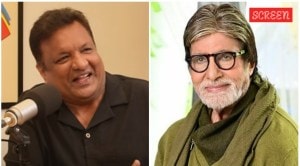Everybody’s India
Why does the BJP say that “hindutva” is still its agenda? (Let’s not dignify this narrow word with a capital H). Ramzan and N...

Why does the BJP say that “hindutva” is still its agenda? (Let’s not dignify this narrow word with a capital H). Ramzan and Navratras have coincided for the first time in thirty-two years — after 1962, the year of the Chinese aggression, when H and M fought side by side against a common foe without the terrible resonances of fighting “bichhde bhai” like in the Indo-Pak wars. The Muslims in Old Delhi see it as “God’s gift” as they finish their roza and attend the Ramlilas for which they have made the fireworks since decades. Many Hindus, too, see it as God’s gift for Vijayadashmi: that a time of healing is finally upon us and it is up to us to interpret and act correctly upon these augurs.
For instance, with incredible filmi symbolism, a rakshas like Veerappan has been taken out by a “Vijay Kumar”. So we really ought to look at the work of the Adikavi or First Poet, the ‘‘father of Indian literature”: Valmiki, the first Indian scriptwriter. His Ramayana offers stunning clues about the idea of India as a land where many types of people interacted positively. See the sources that Valmiki drew upon, detailed beautifully by the late scholar K.S. Srinivasan:
“First, the story. Historically, Valmiki had nothing to draw upon except the bare tale of ‘Dasratha Jataka’ about King Dasaratha, his wives, Rama and the exile; the story ends there. For the rest, Valmiki drew upon two other legends current in the pre-Christian era: the one about Vali and Sugriva and the other about Ravana, the frightful abductor. The blending of these three tales into a single epic was the genius of Valmiki… involving different peoples. Indeed, the peoples of the Ramayana range from the urban elite in Ayodhya to the totemistic tribes in Kishkinda and the ‘giddis’ and ‘kokrus’ in Madhya Pradesh who trace their “origin” to the vulture and the monkey, represented by Jatayu and Hanuman in the epic.”
“Unlike the Mahabharata, a tale of warring cousins”, said Srinivasan (a long-ago neighbour of mine in Lutyens’ Delhi, whom I was too young to appreciate, then), “the Ramayana, whether looked upon as tracing events in a three hundred or three thousand mile-long territory, encompasses peoples of different regions and different levels of cultural advancement”. What has kept changing since Valmiki’s time is the power relationship between castes and tribes.
Power relationships obviously changed over time between the now-warring, now-melding “tribes” of H and M, both inhabitants of India. We’re now in a democracy, which throws up its own equations of sharing. But surely we all belong in the story, simply as ourselves without needing to wear specific colours, as long as we’re all engaged in the ‘holy cause’ of India’s welfare? Valmiki’s Ramayana suggests that.
Photos




- 01
- 02
- 03
- 04
- 05



























